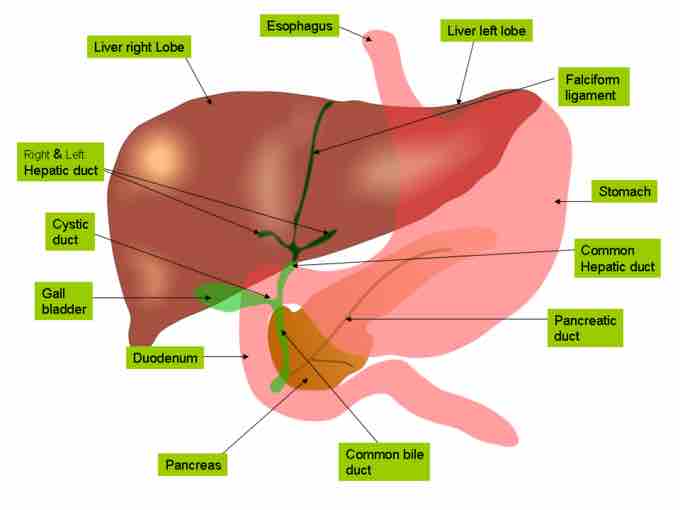The Liver
The human liver is both the largest internal organ (the skin being the largest organ overall) and the largest gland in the human body. It is a soft, pinkish-brown, triangular organ normally weighing 1.44–1.66 kg (3.2–3.7 lb).
The liver has a wide range of functions including detoxification, protein synthesis, and the production of the biochemicals necessary for digestion. It is located in the right upper quadrant of the abdominal cavity, resting just below the diaphragm. The liver lies to the right of the stomach and overlies the gall bladder.

The position of the liver
The spatial relationship between the liver, stomach, gall bladder, and pancreas. The liver is seen above the stomach, gall bladder, and pancreas.
The liver is connected to two large blood vessels, the hepatic artery and the portal vein. The hepatic artery carries blood from the aorta to the liver, whereas the portal vein carries blood containing the digested nutrients from the entire gastrointestinal tract, and also from the spleen and pancreas to the liver. These blood vessels subdivide into capillaries that then lead to a lobule.
Lobes of the Liver
Traditionally, the liver is divided into four lobes: left, right, caudate, and quadrate. The lobes are further divided into lobules, the functional units of the liver. Each lobule is made up of millions of hepatic cells that are the basic metabolic cells of the liver.